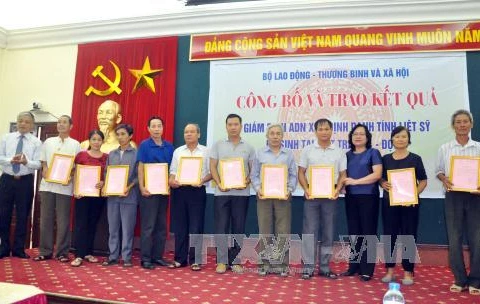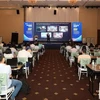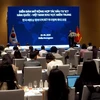Hanoi (VNS/VNA) - The 20-year resistance war against America left nearly 850,000 Vietnamese soldiers dead and at least 300,000 of them may never be identified and returned to their living relatives.
In the decades after the war ended in 1975, the absence of physical traces of the dead has driven many families across the country to desperation, seeking help from the most dubious of sources: mediums who claim they can communicate with the underworld and ask spirits to point to the location of their remains.
In the last few years, with genetic analysis becoming more accessible and widely known, the scientific approach to identifying the remains of war martyrs has gained traction.
However, the process is difficult and time-consuming according to Professor Le Dinh Luong, the founder of Centre for Genetic Analysis and Technology (CGAT), the leading centre where families can come to verify remains, either by document research or through personal belongings on the remains.
Within four hours, the results of DNA analysis are available, however, the verification of a body may take a week.
“For the living, DNA testing can be done fairly easily with DNA samples taken from the nucleus of the cells of a person’s hair, blood, toenails or fingernails,” Luong said.
“However, in the case of the dead, because all other flesh parts of the body have decayed, we need to sequence mitochondrial DNA (mtDNA) extracted from, most of the time, teeth, dried hair and bones of the dead, which takes much more time.”
To complicate the matter, not any tooth or piece of bone is usable – ideally, the tooth must have its root relatively intact, i.e. hard and bright-coloured (not blackened or totally decayed), and the bones must be from the arms or legs.
Cleaning samples is also not easy, requiring six to seven specialised types of machines, doing everything from ultrasound scanning, polishing, drying to pasteurising.
Sequencing the mtDNA, the main process, requires even more state-of-the-art machines to ensure accurate analysis.
“After obtaining the results of the sample, we must first check it with the genetic make-up of all the people who have entered the lab from the moment the sample is received, because just one sneeze could contaminate the sample.”
Nguyen Xuan Hung, head of CGAT’s analysis lab, said despite the time and effort going into the process, the matching rate is only 20 percent, as sample collection of remains in Vietnam faces many hurdles.
The leading, and most frustrating, reason is that due to the humid and hot weather of a tropical country, the body decays really fast. Many families travelled a long distance just to return home empty-handed because there was almost no trace of DNA left in the samples of the remains they brought.
The lack of documentation and missing records from the war also lead to confusion.
“In a case I remembered, this family brought here three different samples but none of them belong to their dead relatives,” Professor Luong said.
“In addition, the war was the most devastating one in Vietnamese history. A single bomb dropped could mean an entire unit was wiped out, and in war-time where burial was mostly hastily, mislabelling or sketchy records were common. Even sadder, a single grave might contain different body parts from many different people,” he added.
Even though his work is DNA testing, Professor Luong insisted that the large sum of money spent on this time-consuming, costly and most of the times, futile expenditure should be spent elsewhere.
“The resources should be poured into building a database of war martyrs where information could be accessed easily. And instead of trying to identify remains, let’s support the families, the grieving wives and mothers who are living in hard conditions, it’s just much more practical,” he said.-VNS/VNA
VNA






















